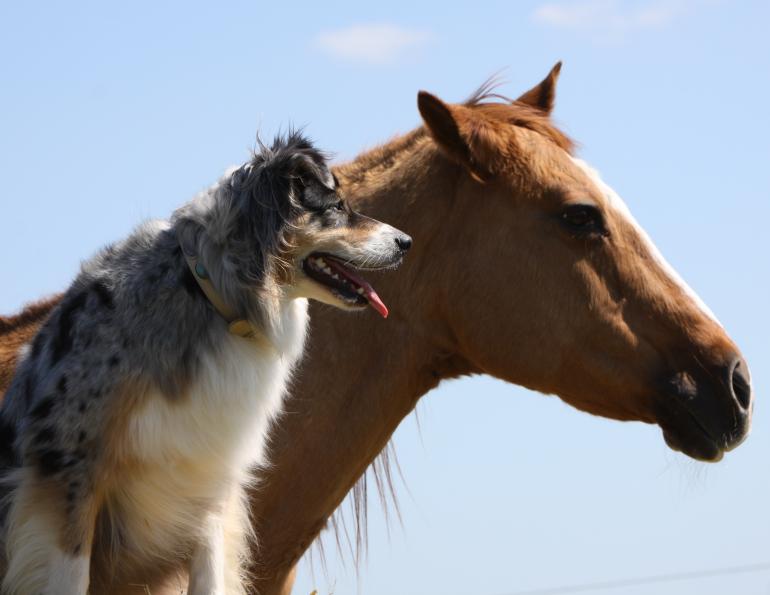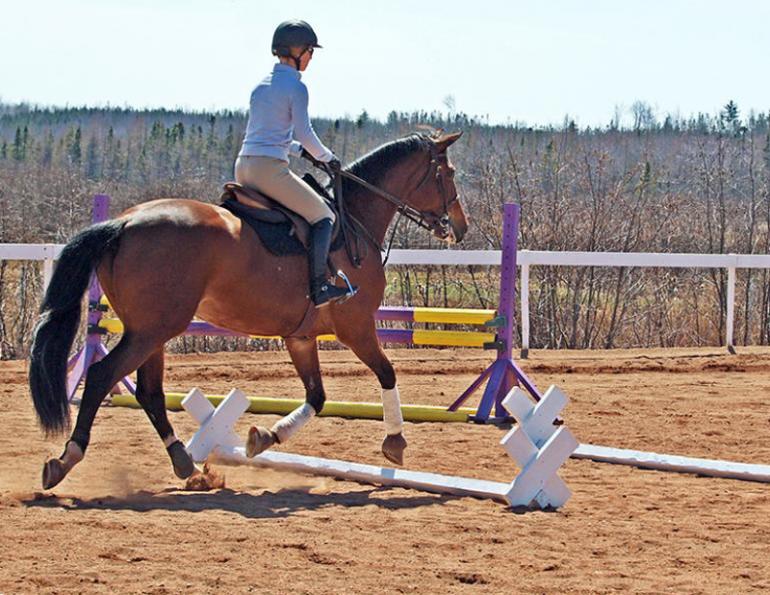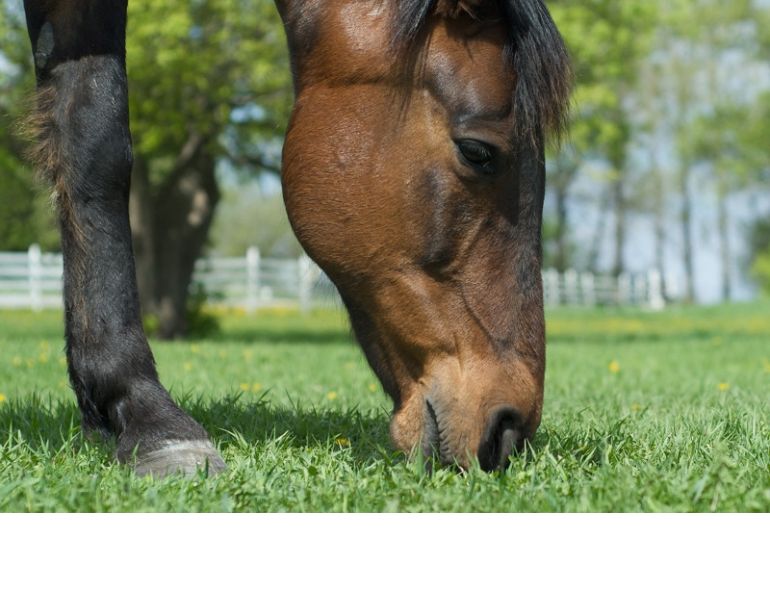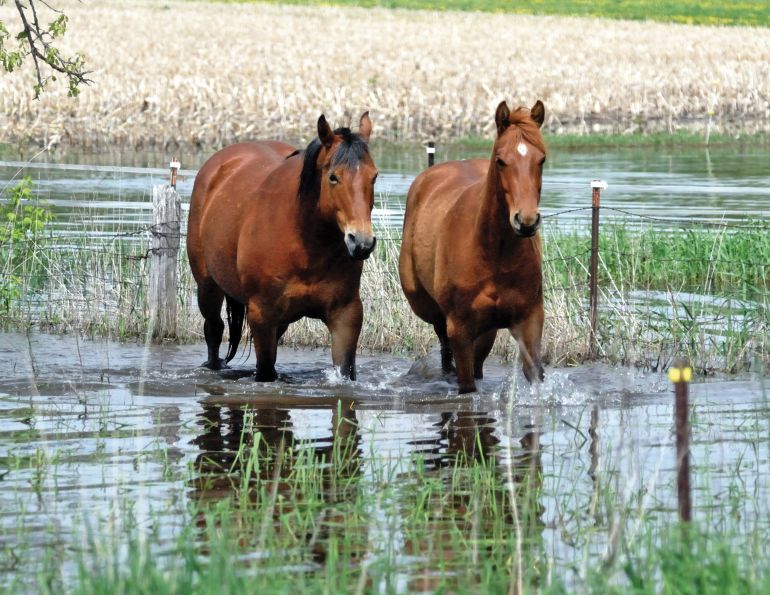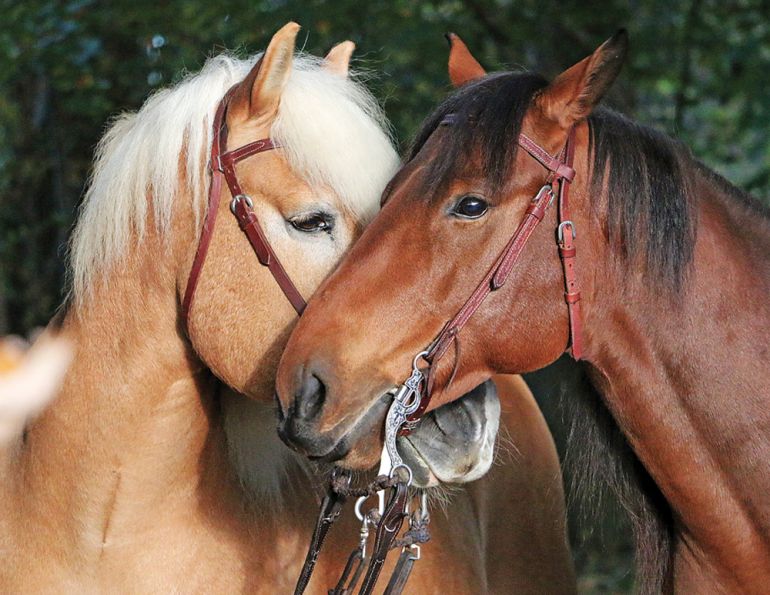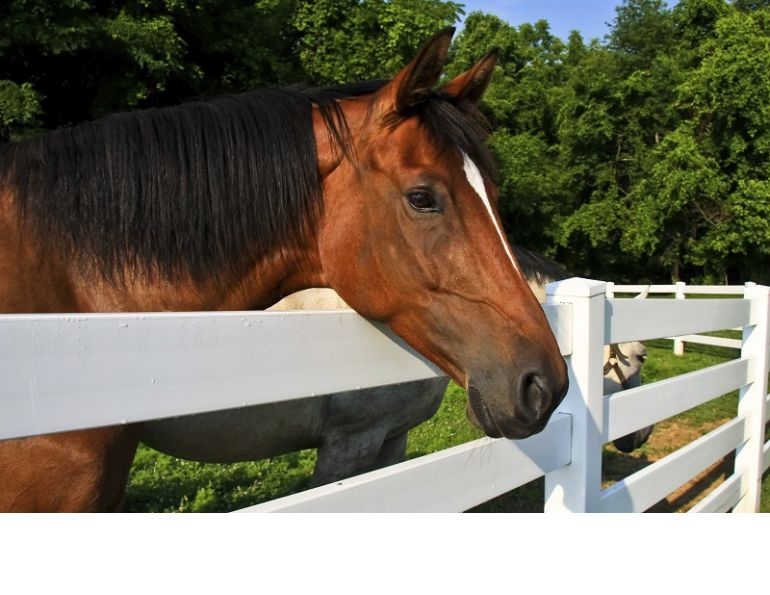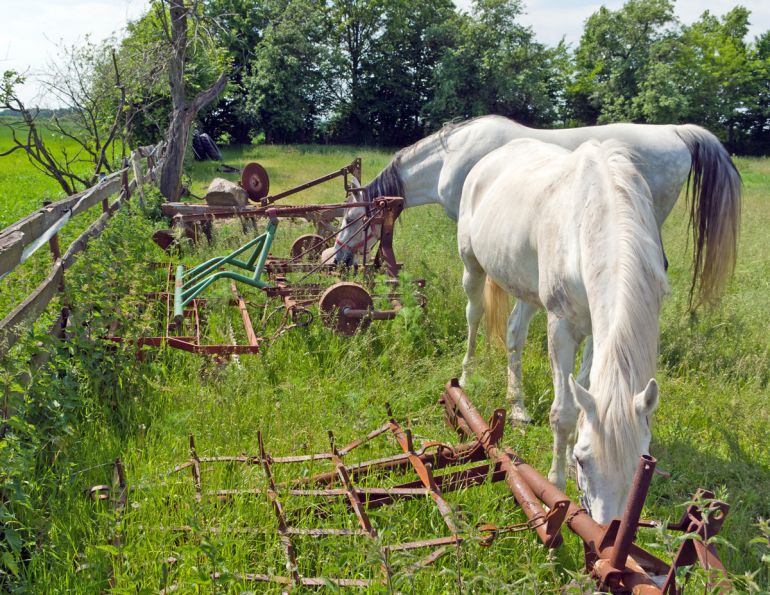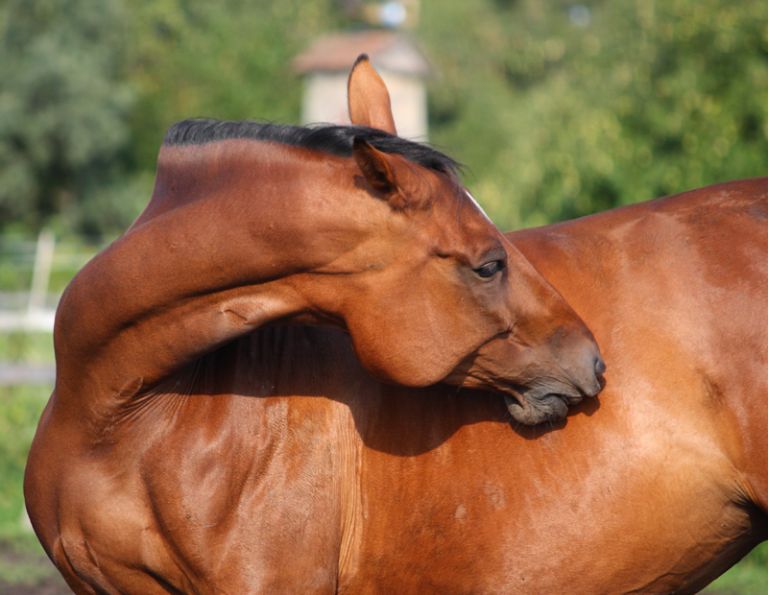Updated:
March 31, 2014By Jess Hallas-Kilcoyne
The brown stubble of winter is being replaced by the first tender shoots of green spring grass, and your horse is eager to hit the pasture and mow down. But early spring grass has high sugar and protein content, and a horse that is unaccustomed to its richness (as most horses are after our long Canadian winters) may be at risk for laminitis and colic if he is abruptly turned out to overindulge on lush pasture.
To help ensure a smooth transition to pasture turnout this spring for your horse, keep the following precautionary measures in mind.
- Limit grazing time. Begin by turning your horse out for 10 to 15 minutes on the first day, and increase the grazing time by no more than five minutes per day to allow his gastrointestinal system to become accustomed to the new feed source gradually.
- Feed hay immediately before turnout. Making sure your horse is well-fed before he goes out on pasture will help curb his appetite and prevent overeating.
- Use a grazing muzzle. Particularly useful if your horse is obese or prone to laminitis, a grazing muzzle will reduce his consumption of rich pasture.
- Monitor your horse daily. If you observe in your horse any unexplained lameness, heat in the hooves, or signs of gastrointestinal distress such as excessive rolling and biting or kicking at his flank, discontinue pasture turnout and call your veterinarian immediately.
- Supplement pasture with hay. If and when your horse's grazing time has been extended to longer stretches, he may still require hay to fulfill his nutritional needs.
- Prepare a dry-lot. If your horse has a history of founder or laminitis, or if he shows any indication of laminitis or colic during the transition to pasture turnout, you may have to completely eliminate his access to pasture.
- Consult your veterinarian. You should always check with your equine veterinarian before making any major changes to your horse's diet and/or management.
This article originally appeared in the HORSEJournals.com E-Newsletter. To subscribe, click here.




